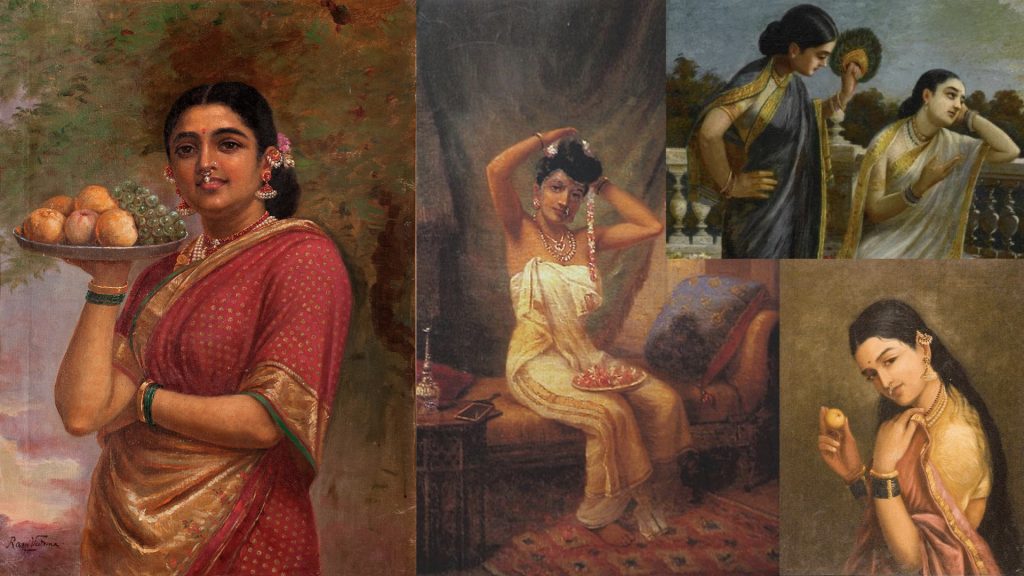Smriti Malhotra
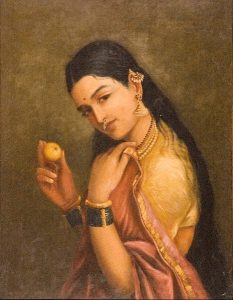
If the women painted by Raja Ravi Varma had their own Instagram handles now and posed photographs of themselves with mundane objects, dressed opulently, gazing lovingly at the views, it would leave their followers awe-struck. Raja Ravi Varma set the standards of Indian beauty through his artworks, the aesthetics of Raja Ravi Varma are quite popular even today and one cannot avert their gaze from his sensual depictions of women in his paintings. Raja Ravi Varma showcased European realism and romanticism in his artworks, creating modern yet traditional paintings of his time and even now.
Raja Ravi Varma was born to an aristocratic family in Kilimanoor, Kerala was a self taught artist who wanted to showcase the elegance and poise of Indian women to the world, hence choosing majorly women as his muses for his artworks. He not only wanted to showcase the Indian beauty and depicted ‘Indianness’ in his works but also displayed the rich textile and jewellery heritage of the country. He played with rich colours and beautiful textures depicting women wrapped in beautiful paithani from Maharashtra and the silks from the south. The notion was also to depict real Indian women who are making their entry and mark onto the public domain than have simply been spun out of his imagination.
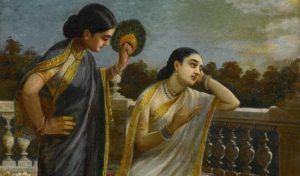
His paintings with women such as ‘Shakuntala removing a thorn from her foot’, 1898, ‘Damyanti’ painted in 1895, ‘Nala leaving Damyanti while she is sleeping’, ‘Nair Lady with a mirror’ (1870), ‘Reclining Nair Lady’ (1897), all reflect a familiar intimacy and is suggestive of passion and longing. Paintings such as these show us the feminine space and give us a glimpse into the female expression and emotions which traditionally were not explored by artists until then. Such glimpses into the women’s world is also then later provided by Amrita Sher-gil in some of her paintings as well such as ‘Bride’s toilet’, ‘Village scene’ (1938), ‘In the Ladie’s Enclosure’ (1938).
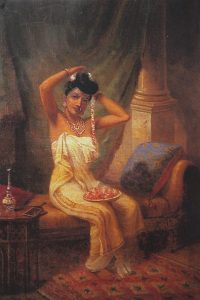
Raja Ravi Varma’s muses are emblems of femininity, which were both progressive and pigeon-holed women into being perceived in a certain manner. These females were beautiful, and empowered but were also idealistic, subservient and passive. While the women were confident and looked straight at the viewer without any hesitation, Raja Ravi Varma perpetuated the age-old notions of unrealistic beauty standards and perpetuated the stereotypical gender roles. Many women in his paintings such as Nair Lady Adorning her hair, Madri or Maharashtrian lady with a fruit,Lady with a lamp are simply engaged in mundane daily activities and are simply passive participants in the paintings which reinforced the same gender roles. The women were painted for the male gaze, they were particularly painted to lure the man’s fantasy with their subverted sexuality, romantic expression which is suggestive of an ideal beauty. According to Deepanjana Paul in her book ‘The Painter:Raja Ravi Varma’, “Ravi Varma’s imaginary women are cyphers, they will never be realistic because very few people actually look like that. Every now and then in their own way, the women Ravi Varma imagined can and do reflect what we would like to see in ourselves and the world around us,”
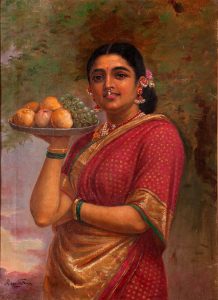
His women were aesthetically pleasing but were a departure from their usual depiction in Indian art, they were empowered beings yet were depicted passively gauging for male desires. He captured the grace, beauty and contours of Indian women from all walks of life from ordinary Tanpura player on the street to aristocratic Queens of state to also the mythological characters. He was the man that changed the depiction of Indian womanhood in popular art from the 19th century onwards. Click to read more on Raja Ravi Varma.

